
Recently released data from the U.S. Census Bureau shows that population growth in the U.S. has reached its lowest level since 1937 despite recent gains in immigration. The long-term downward trend is the result of a declining birth rate and increased deaths, especially among America’s aging white population.
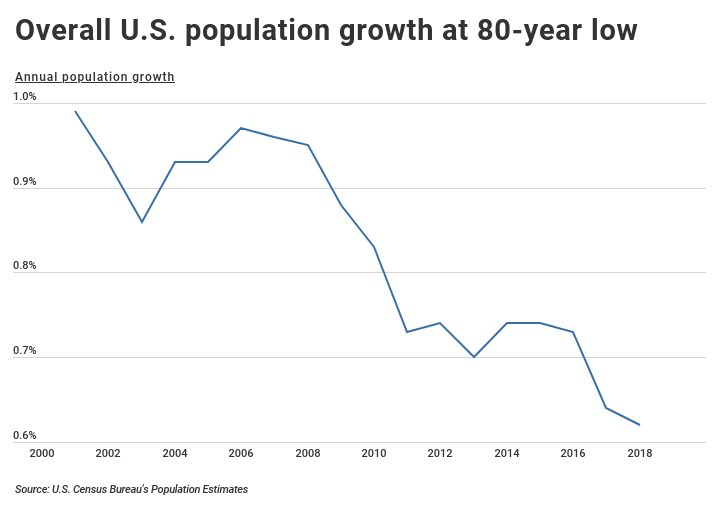
While population growth has slowed at the national level, population changes at the state and city level vary widely. Between 2017 and 2018, all but nine states saw their populations rise. Texas, Florida, California, and Arizona experienced the largest absolute population increases. At the other end of the spectrum, New York, Illinois, West Virginia, and Louisiana experienced the largest absolute population decreases, largely as a result of residents moving out-of-state.
While Texas, Florida, and Arizona also lead the country in net domestic migration (people moving in from other states), California ranks second only to New York for having the most people leaving the state. New Jersey and Illinois are also prominent among the long list of states losing swaths of residents to other states.
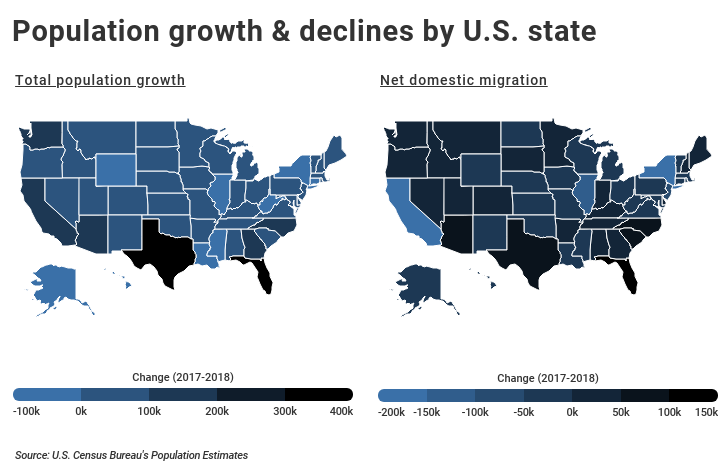
In order to determine the fastest-growing U.S. cities, researchers at CarInsuranceCompanies.com analyzed data from the U.S. Census Bureau over a five-year period. Population growth was measured as the percentage increase or decrease in the population from 2013 to 2018. Researchers also calculated population changes by education level, age, and race/ethnicity to provide additional insight into the evolving demographics of each city. Here are the fastest-growing U.S. cities.
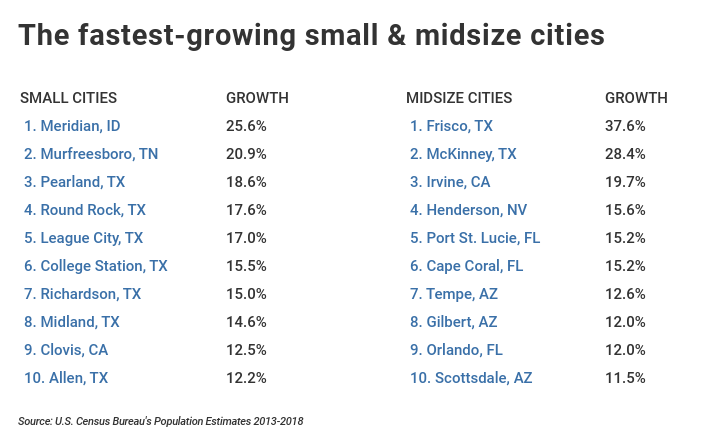
The Top 10 Fastest-growing Large Cities
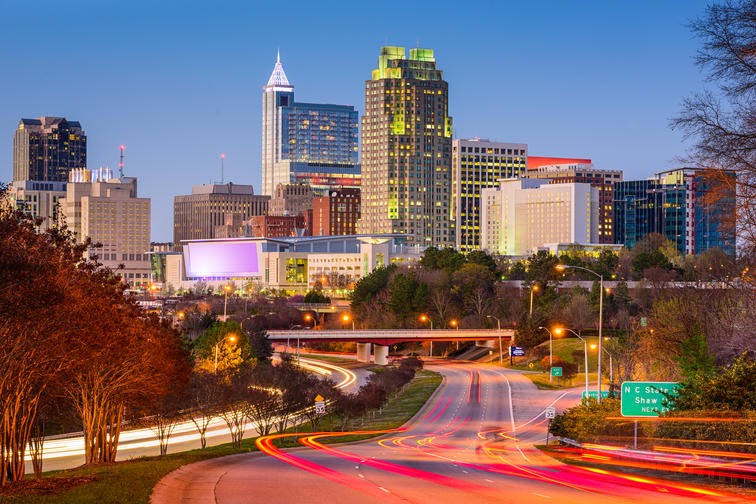
Photo Credit: Alamy Stock Photo
10. Raleigh, NC
- Percent change in population: 8.9%
- Total population growth (2013 to 2018): 38,196
- Growth in the college-educated population: 22.4%
- Fastest-growing age group: Ages 65 to 74
- Fastest-growing race/ethnicity: Non-hispanic White
Raleigh is close to several top-tier universities, including Duke University, the University of North Carolina at Chapel Hill, and North Carolina State University. It is also near the Research Triangle Park, making it a premier tech hub with plenty of job opportunities. Retirees also find Raleigh appealing, with plenty of cultural offerings, low living costs, and mild winters.

Photo Credit: Alamy Stock Photo
9. Mesa, AZ
- Percent change in population: 9.5%
- Total population growth (2013 to 2018): 43,978
- Growth in the college-educated population: N/A
- Fastest-growing age group: Ages 55 to 59
- Fastest-growing race/ethnicity: N/A
The Southwestern desert town of Mesa is the 3rd largest city in Arizona. Located just outside of Phoenix, Mesa offers affordable living, warm weather, and some of the lowest property taxes in the country. Residents enjoy hiking, museums, and a growing fine dining scene.
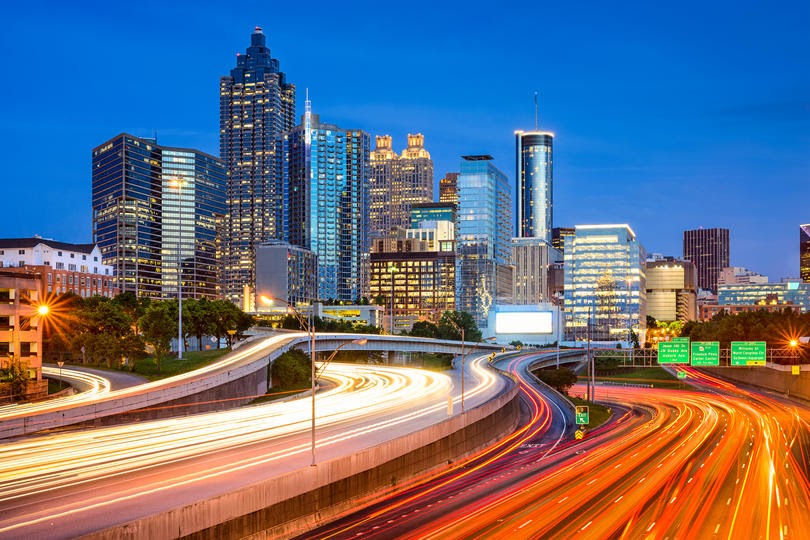
Photo Credit: Alamy Stock Photo
8. Atlanta, GA
- Percent change in population: 9.8%
- Total population growth (2013 to 2018): 44,253
- Growth in the college-educated population: 25.0%
- Fastest-growing age group: Ages 55 to 59
- Fastest-growing race/ethnicity: Non-hispanic White
The city of Atlanta is home to about half a million residents, but the sprawling Atlanta suburbs are home to millions more. After decades of population decline in the city, Atlanta has been growing since 2010 as more people have moved in from the suburbs to cut down on commute times and enjoy living in a walkable urban environment.
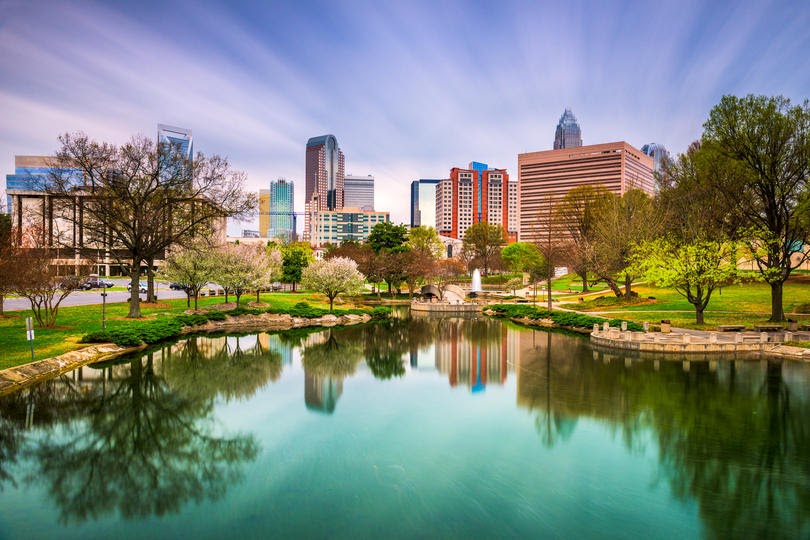
Photo Credit: Alamy Stock Photo
7. Charlotte, NC
- Percent change in population: 10.1%
- Total population growth (2013 to 2018): 80,315
- Growth in the college-educated population: 23.3%
- Fastest-growing age group: Ages 65 to 74
- Fastest-growing race/ethnicity: Non-hispanic Asian
Charlotte is one of the largest financial banking centers in the U.S., second only to New York. As such, the city has plenty of good job opportunities for the sizable college-educated population. In recent years, the city has drawn many Southeast Asian immigrants, many from Vietnam.
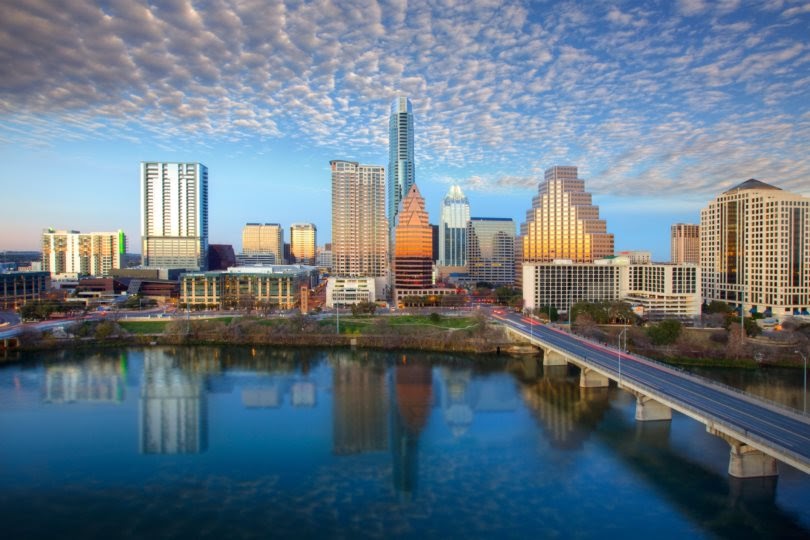
Photo Credit: Alamy Stock Photo
6. Austin, TX
- Percent change in population: 10.1%
- Total population growth (2013 to 2018): 88,791
- Growth in the college-educated population: 33.8%
- Fastest-growing age group: Ages 65 to 74
- Fastest-growing race/ethnicity: Non-hispanic Asian
The “Live Music Capital of the World” experienced a 10 percent increase in its population from 2013 to 2018. While living in Austin proper has become more expensive, the city boasts a healthy job market with plenty of tech companies, a great nightlife and restaurant scene, and many outdoor recreational activities.
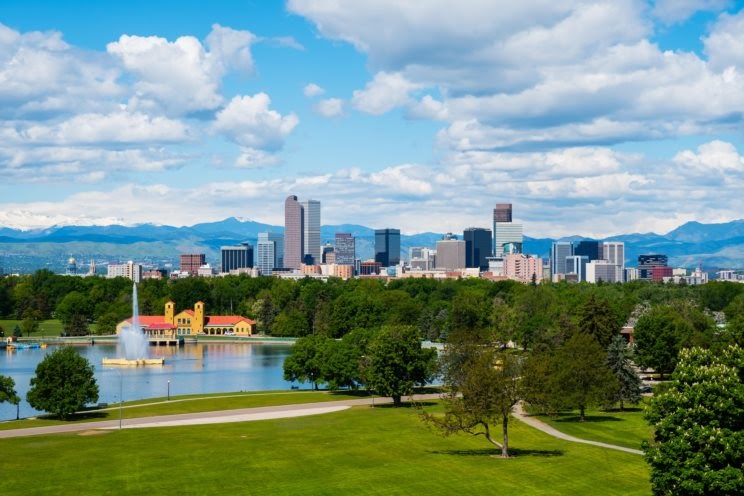
Photo Credit: Alamy Stock Photo
5. Denver, CO
- Percent change in population: 10.3%
- Total population growth (2013 to 2018): 66,979
- Growth in the college-educated population: 32.1%
- Fastest-growing age group: Ages 65 to 74
- Fastest-growing race/ethnicity: Non-hispanic Native Hawaiian or Other Pacific Islander
Denver’s mountains and natural beauty are a big attraction to new residents, as is the city’s strong job market. Both young families looking to establish roots and active retirees seeking a place to enjoy their golden years can enjoy skiing in the winter or mountain biking and hiking in the summer.
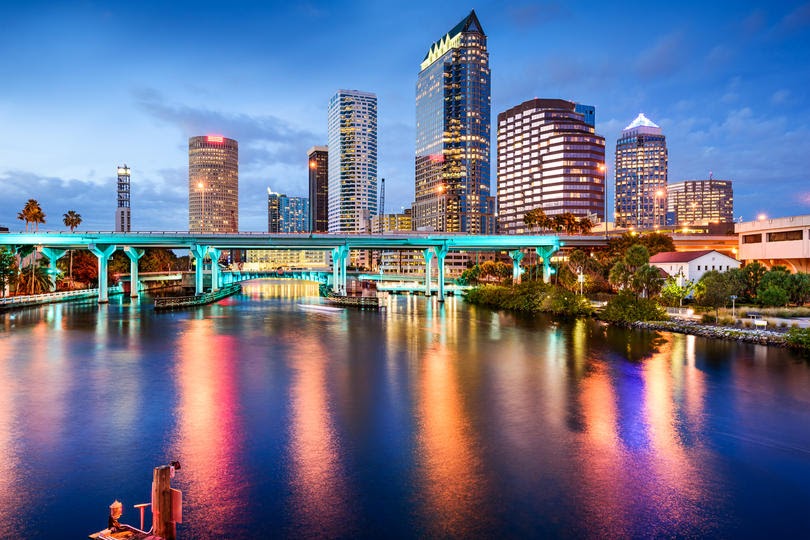
Photo Credit: Alamy Stock Photo
4. Tampa, FL
- Percent change in population: 11.5%
- Total population growth (2013 to 2018): 40,464
- Growth in the college-educated population: 23.0%
- Fastest-growing age group: Ages 25 to 34
- Fastest-growing race/ethnicity: Hispanic or Latino
After being hit hard by the Great Recession, Tampa has made a comeback and is now among the fastest-growing U.S. cities. The city’s healthy job growth, affordability, and revitalized downtown and waterfront areas have helped make people aged 25 to 34 the fastest-growing age group.

Photo Credit: Alamy Stock Photo
3. Miami, FL
- Percent change in population: 12.2%
- Total population growth (2013 to 2018): 51,085
- Growth in the college-educated population: 50.5%
- Fastest-growing age group: Ages 65 to 74
- Fastest-growing race/ethnicity: Non-hispanic White
Miami is known for its gorgeous beaches and vibrant nightlife, and while the cost of living is high, taxes are not because there is no state income tax in Florida. Retirees, aged 65 to 74, are the fastest-growing age group, many of whom seek out Miami’s warm weather, golf courses, beaches, and cultural offerings.
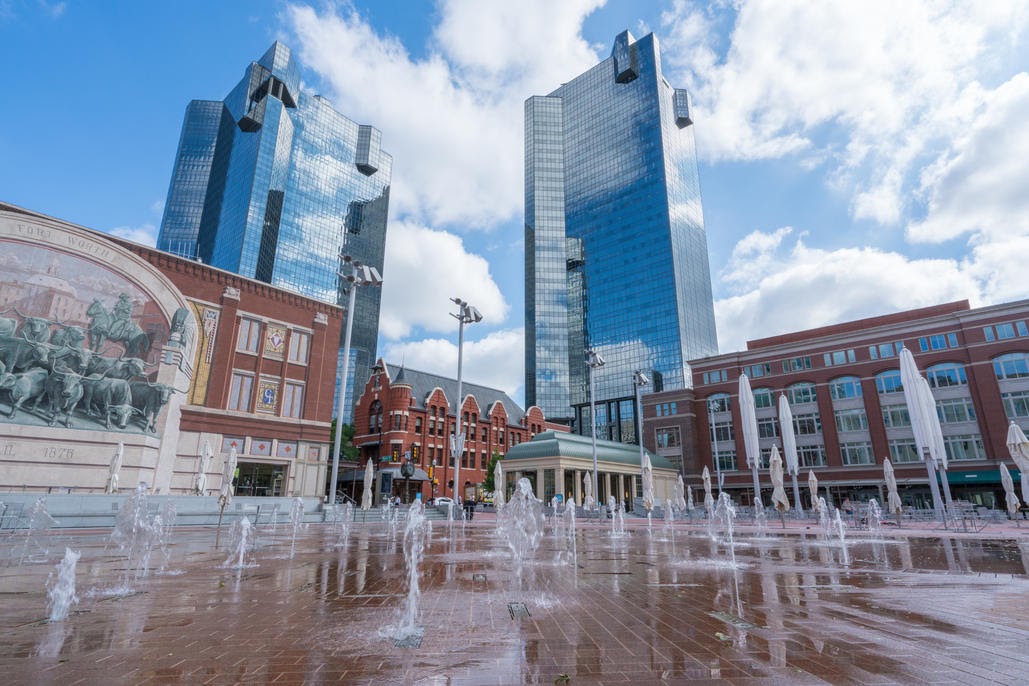
Photo Credit: Alamy Stock Photo
2. Fort Worth, TX
- Percent change in population: 12.4%
- Total population growth (2013 to 2018): 98,833
- Growth in the college-educated population: 22.6%
- Fastest-growing age group: Ages 60 to 64
- Fastest-growing race/ethnicity: Non-hispanic Asian
Not just the little sister to Dallas, Fort Worth offers affordable living, a vibrant and growing downtown, and cultural diversity. It is more affordable and less crowded than Dallas, and maintains a small-town feel despite being one of the top 25 largest U.S. cities. Fort Worth also boasts a robust job market, as the area is home to a number of Fortune 500 companies.

Photo Credit: Alamy Stock Photo
1. Seattle, WA
- Percent change in population: 13.9%
- Total population growth (2013 to 2018): 90,731
- Growth in the college-educated population: 25.8%
- Fastest-growing age group: Ages 65 to 74
- Fastest-growing race/ethnicity: Non-hispanic Asian
Despite being the most expensive city to live in on the list, Seattle claims the number one spot for fastest-growing cities. A combination of high-paying tech jobs and no state income tax help attract new residents and make the high living costs more palatable. Historically home to a large Chinese population, Seattle continues to experience large increases in the Asian population.
Detailed Findings & Methodology
Several key demographic trends have emerged in the U.S. in recent years. The country is becoming more racially and ethnically diverse, the number of older people is increasing as more baby boomers reach retirement age, and immigration continues its upward trend. While population growth in the U.S. is slowing and has, in fact, reached an 80-year low, the population continues to grow. Increasingly, immigration is becoming a driving force behind population growth as births decline, deaths increase, and the number of immigrants coming to the U.S. grows.
As the U.S. population ages, the death rate has been steadily rising in recent years. At the same time, the birth rate has been slowly decreasing, reaching a 32-year low in 2018. This decline in the birth rate is due to both falling teen birth rates and the fact that women in their 20s and 30s are delaying having children, a possible lingering effect of the Great Recession.
As non-Hispanic whites age, and immigrants and minorities become the driving force behind population growth in the U.S., the country’s demographic makeup is experiencing a radical change. According to Census Bureau population estimates, immigration now accounts for 48 percent of population growth, up from just 31 percent in 2011. By 2045, Census Bureau projections indicate that non-Hispanic whites will no longer make up for the majority of the population. For young people under age 18, this demographic milestone will occur by 2020.
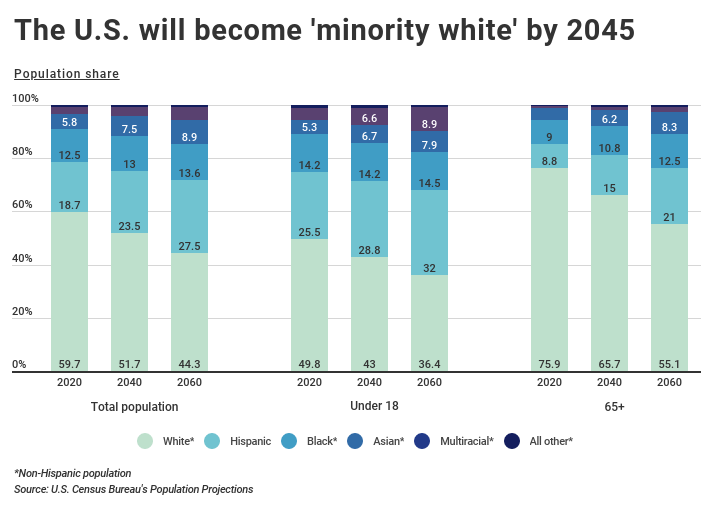
Roughly 80 percent of the U.S. population lives in cities. And similar to states, cities have experienced variable population growth in recent years. As the demographic makeup of the U.S. shifts, cities are experiencing new growth patterns. Educated millennials tend to seek out cities with good job opportunities such as tech hotspots Seattle, Austin, and Raleigh. The growing retiree population continues to move to cities with warm weather and vibrant culture, including Miami, Austin, and Denver, despite the higher costs of living. New immigrants are putting down roots in cities with already established immigrant communities, as in the case of Seattle’s continued influx of Asian immigrants.
To determine the fastest-growing cities, researchers at CarInsuranceCompanies.com analyzed population data between 2013 and 2018 from the U.S. Census Bureau’s Population Estimates. Statistics on the growth in the college-educated population, fastest-growing age group, and fastest-growing race/ethnicity are from the U.S. Census Bureau’s 2013 and 2018 American Community Survey.
For the growth in the college-educated population, only statistically significant (at the 10 percent confidence level) results are shown. The fastest-growing age group and the fastest-growing race/ethnicity are identified as the age group or race/ethnicity with the largest percentage change in population that is statistically significant (at the 10 percent confidence level).
The analysis included only cities with at least 100,000 people. Additionally, cities were grouped into the following cohorts based on population size:
- Small: 100,000 – 150,000 people
- Midsize: 150,000 – 350,000 people
- Large: more than 350,000 people
* This article was originally published here
HELP STOP THE SPREAD OF FAKE NEWS!
SHARE our articles and like our Facebook page and follow us on Twitter:








0 Comments